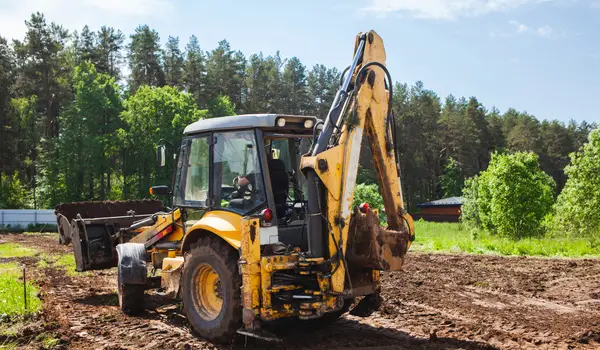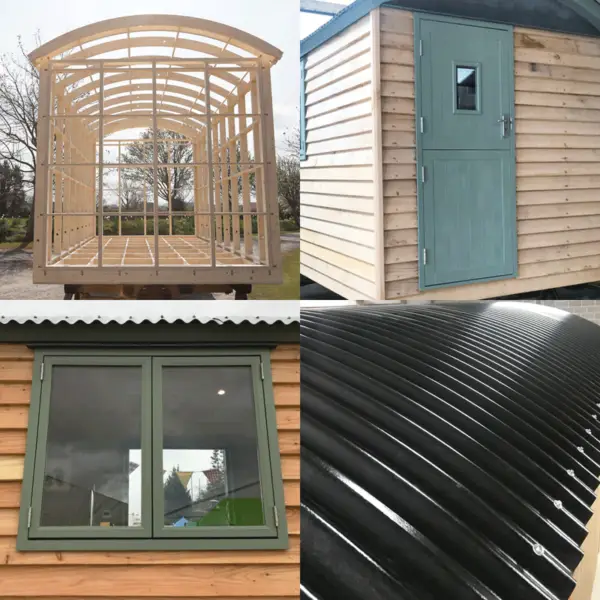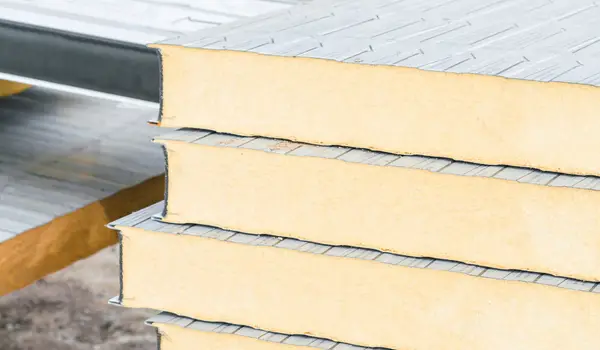How To Build A Shepherds Hut
You may have thought of converting an old shepherd’s hut or buying a kit, but what do you need to know to plan the perfect hut? There is a lot to consider before you start the project. Here we will walk you through all the things to consider that you may need. We have been on-site through a DIY conversion of a vintage hut, taking it from an almost wreck into luxury glamping accommodation sitting at the side of a lake.
How To Buid A Shepherd's Hut From Scratch
If you have decided to build a DIY hut from plans then getting the planning right is key. You need to get the dimensions right and make sure the internal layout works for your needs, or your guest’s needs.
Step By Step Guide
Building a shepherd’s hut typically involves several steps, including:
Designing the hut: You will need to come up with a design for your hut, taking into account factors such as the size and shape of the hut, the materials you will use, and the features you want to include. You may want to consult with a welder, carpenter, or elecrician or gas engineer if there are some aspects that you will need assistance with.
Materials: Once you have a design, you will need to decide on the materials you will need to build the hut. This may include things like wood, roofing materials, windows, doors, and any other components that are part of your design. It is advisable to get these all together to make the building wind and water-tight before starting the interior build.
Preparing the site: Before you start building the hut, you will need to prepare the site where it will be located. This involves levelling the ground, clearing away any debris, and making sure the area is free of any obstacles or hazards. You may need to dig trenches and have services put underneath your build before you start.

Building the hut: Once the site is prepared, you can start building the hut according to your design. This will involve constructing the frame of the hut, installing the roof and windows, and adding any other features or finishes.
Finishing touches: Once the basic structure of the hut is complete, you can add any final touches to make it comfortable and functional. This should include hard-wearing flooring, furniture and fixtures, and adding any other features or decorations that you want.
Overall, building a shepherd’s hut can be a challenging but rewarding project. It will require careful planning, a good design, and the right materials and tools. However, with the right approach, you can create a beautiful and functional hut that will serve as a cosy and comfortable space for years to come.
DIY tips
Here are our tips from watching one be converted on a site we visit regularly.
- Build the hut on site. It may seem easier to do it and then wheel it over but they are very heavy and difficult to manoeuvre.
- Have a full plan before you start to make it suit the space.
- Think about the position of the windows and doors, make sure you make the most of any views and keep the privacy to a maximum
- Add in any solid or gravel paths, and think about how people will get to and from the car to the hut in the winter or in bad weather.
DIY Shepard's Hut Kits
If you do not fancy building one from scratch then there are a few companies that sell kits to build them. Here you will get all the materials you need as well as detailed instructions on how to construct them. Once built it is down to you to paint the outside how you want it and kit out the inside.
If you want the full works there are some companies who will sell you everything to finish the project. If you are running gas or electricity to your hut then be sure to have a qualified professional do the installation for you and get the correct safety certificates if you are going to rent it out.
Where To Buy Shepherd's Hut Kits
We have researched some companies that sell DIY kits for you below. The prices were correct at the time of writing and are subject to change. We have added them as a range as most have different levels that you can buy. Buying a kit and doing the work yourself can save you thousands of pounds.
Harrogate Huts – £4,300 to £5,700
Harroage huts had 3 options of kits with extra add-ons that boosted the price. The add-ons are for different-sized huts, starting at 4.2 meters and going up to 6.6 meters.
The basic version is supplied as a shell including the window and doors. It is everything you need to get the outer frame wind and water-tight. The interior cladding is not supplied nor are any internal fittings.
Delivery was £350 and they take around 4 to 6 weeks to come. If you want to avoid the build they are available to buy ready-made in the region of £17,000-£19,000.

Picture was taken from site: harrogatehuts.com
House Martin Huts, by Sykamore Design – From £9,000
House Marin Huts provide much more bespoke service than a standard kit. There is a whole range of options from size to cladding. These huts are supplied with everything you need including the insulation, floorboards and a full photo guide on how to build the kit.
Whilst they may be one of the most expensive on the list the customisable service adds a lot of value if you are looking for something more unique and to your own tastes.
What stands out is how small all the pieces are, these are perfect for remote sites or sites with poor access. They can be self-built almost anywhere!
The lead time was listed as 12 weeks to the UK. They also offer a installation service if required at an extra cost.

Photo was taken from the site: housemartinhuts.com
Blackdown self build shepherd’s huts – £13,000 – £17,000
The Blackdown shepherd’s hut kit is for those looking for a more traditional style and build. There are just 2 options to pick from, either tin-clad or oak clad. The tin clad ones look stunning and must be more like a traditional hut. These would be perfect for a farm or rural location.
They come in sizes of chassis, starting at 12 feet and going to 18 feet. The chassis can be either oak or metal.
As well as the self-build kits they also offer a turnkey hut with bespoke options. These are more expensive but can be put in place and ready to go with minimal work required.

The photo was taken from the site: blackdownshepherdhuts.co.uk
How To Insulate A Shepherd's Hut
To insulate a shepherd’s hut, you need to add insulation in the building process and make sure it is done well. If you wish to use the hut in the winter then getting the best quality insulation for your budget is key.
Foam or fibreglass insulation: These need to be installed in the walls, ceiling, and floor of the hut to provide a barrier that prevents heat loss.

Double-glazed windows: Installing double-glazed or triple-glazed windows can help to reduce heat loss and prevent drafts.
Insulated doors: An insulated door can also help to keep the hut warm and prevent drafts. This is often overlooked!
Sealing gaps and cracks: You can use caulk or expanding foam to seal any gaps or cracks around the windows, doors, and other openings in the hut. This will prevent drafts and help to keep the hut warm.
Adding weatherstripping: Installing weatherstripping around the doors and windows can help to reduce air leakage and prevent drafts.
Using thermal curtains: Hanging thermal curtains over the windows can help to keep the heat inside the hut and prevent it from escaping.
By following these steps, you can help to keep your hut warm and reduce energy costs.
FAQ's
The best cladding for a shepherd’s hut is durable wood cladding. Metal is popular but this is very noisy in the rain. You can clad it in wood and paint it which is cheaper but requires more maintenance. Alternatively, you can use wood that weathers like cedar, this is more expensive but requires less maintenance.
If you are building one from scratch our research shows the average build cost is around £1,500. This can be reduced by reusing old wood, shopping around and upcycling items.
